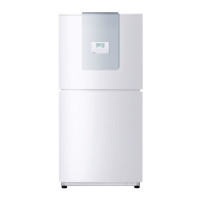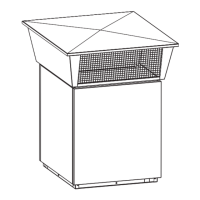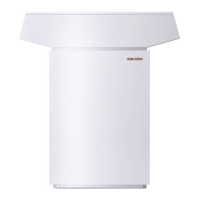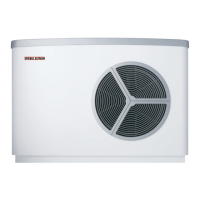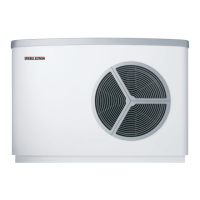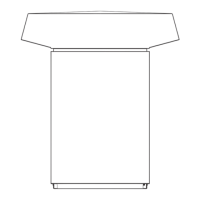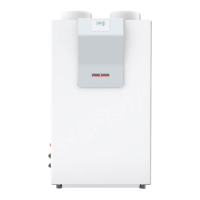9
Water and electrical connections in external installations
1 Condensate drain hose
2 Heating flow (flexible pressure hose)
3 Heating return (flexible pressure hose)
4 Electrical cables
5 Cable duct for electrical cables
6 Control panel with strain relief for elec-
trical cables
7 Installation conduit for electrical cables
Fig. 7
Water and electrical connections for internal installations
Fig. 8
3.6.4 Flushing the heating system
Thoroughly flush the pipework before connect-
ing the heat pump. Debris, such as welding
pearls, rust, sand, sealant etc. can impair the
operational reliability of the heat pump, and
can lead to a blocking of the evaporator.
3.6.5 Venting the heating system
Air pockets in the system are detrimental to
the heat pump function.
Vent the pipework thoroughly. For this, also
activate the air vent valve integrated into the
heating flow.
Water quality
To prevent equipment damage through scaling,
observe the following when filling the system with
heating water:
The total water hardness must be <1°dH.
The total alkaline earths in the water must be
<0.18mmol/l.
Please note! Fully desalinated/softened water or
natural rainwater must not be used, as that would
result in increased corrosion. Suitable appliances
for softening as well as filling and flushing heating
systems can be hired from our customer service
department or can be obtained from the trade.
3.6.6 Oxygen diffusion
Corrosion can result on steel components,
when plastic underfloor heating system pipes
are used, which are not impermeable to oxy-
gen or in open heating systems.
The product of corrosion, i.e. rusty sludge, can
settle inside the heat pump evaporator and
can result in output reduction through reduc-
tion of cross-section or in a shutdown being
activated by the high pressure limiter.
Therefore it is advisable to avoid open heat-
ing systems or the installation of steel pipes
in conjunction with plastic pipes in underfloor
heating systems, which are not impermeable
to oxygen.
3.6.7 Scaling
Water quality, operating conditions and the
water volume are decisive factors to the extent
of scaling. To prevent damage to valves, heat
exchanger and heating elements, check the
water condition and assess it in accordance
with VDI 2035 [or local regulations].
Note: An awareness of hardness in
accordance with the Detergent Act [Germany]
is insufficient. Decisive for scaling is the
concentration of calcium hydrogen carbonate,
which can be supplied by your water supply
company.
1 Condensate drain hose, optionally on the
r.h. or l.h. side
2 Flexible pressure hose (heating flow)
3 Flexible pressure hose (heating return)
4 Electrical cables
5 PG fitting with strain relief
6 Pipe duct
7 Control panel with strain relief for elec-
trical cables
8 Pipe-bow (supplementary)
9 Flow connection
10 Air-vent
11 Coarse gravel back filling
12 Concrete foundation
6
4
2
3
1
1
7
1
8
5
9
10
11
C26_03_01_0669
6
2 3
4
7 111
12
5
8
9
10
8 Pipe bend (included in the accessories)
9 Heating return connection
10 Screw-connect pressure-pipe
11 Screw-connect suction pipe
12 High limit safety cut-out for DHC
12
C26_03_01_0670
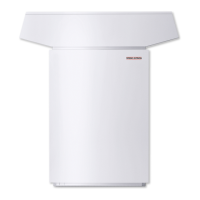
